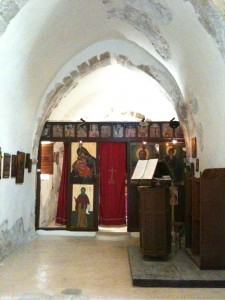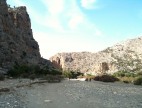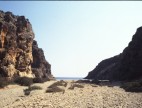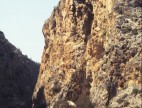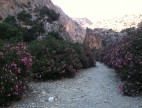Agiofaraggo of the Holy Monastery of Odegetria
The Agiofaraggo [Holy Gorge] is found within the boundaries, and belongs to, the Monastery of Odegetria. Within the surrounding area, which followed the apostolic tradition of the Church of the Gortynians, with the beneficial morphology of the land and a mild climate, the Agiofaraggo thrived as a place where Christian monasticism developed, particularly in its ascetic form. This sanctified gorge, away from cities and villages, full of caves, isolated areas and steep rocky crevices, became the ideal location for the flourishing of ascetics and hermits. The contestants of the hermit life at Agiofaraggo practiced the crowning spiritual toils of monks, the Jesus prayer and neptic work whose three stages of catharsis (purification), illumination and theosis (deification) are described in the Philokalic ascetic literature of the Desert Fathers. The high level of spiritual life which was practiced by the hermits of Agiofaraggo is witnessed in the written source which is entitled “New Eklogion.” It is mentioned there that St. Gregory of Sinai [Sinaites] (1255 – 1347) landed at Kalous Limenes and then went to Agiofaraggo, where he was taught those things necessary for nepsis [watchfulness] and especially those things pertaining to the Jesus Prayer by St. Arsenios of the Agiofaraggo [Agiofaraggites]. Subsequently, St. Gregory left Crete along with his disciple, St. Gerasimos of Evia, went to the Holy Mount Athos where he transmitted and taught the hesychastic and neptic work. An imposing church of the 14th – 15th centuries survives today inside the gorge, whose plan is the result of two successive additions of domes to a small cavernous church, dedicated to St. Anthony.

